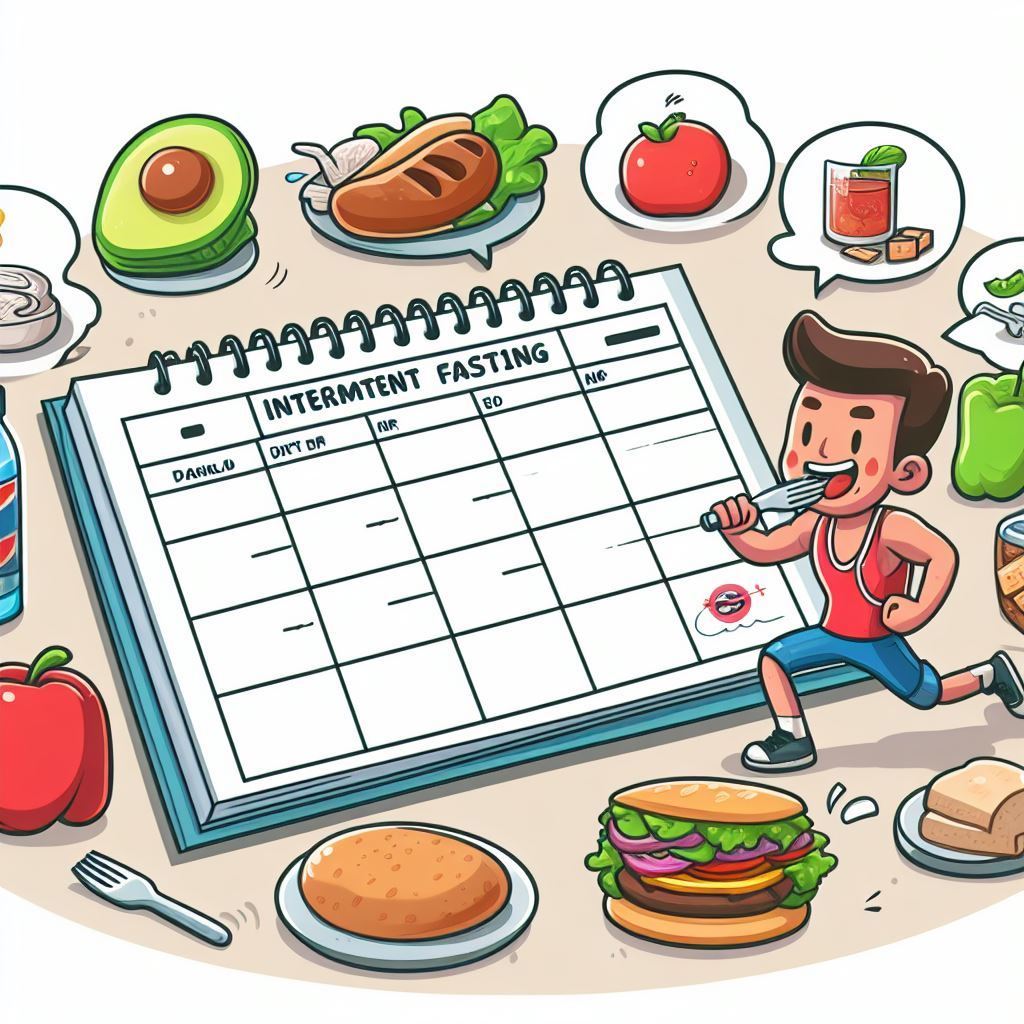Estimated reading time: 5 mins
Whatever works for you! But hold on, this isn’t a lazy answer. Gimme time to explain and I will share my own schedule, and why I use it.
Intermittent fasting (IF) has become a popular approach to health and wellness, praised for its potential benefits ranging from weight loss to improved metabolic health. But what exactly is intermittent fasting, and how can you determine the best fasting schedule for your needs? This post delves into the basics of intermittent fasting, explores various fasting schedules, and underscores the importance of understanding your own body and hunger cues.

Understanding Intermittent Fasting
Intermittent fasting isn’t a diet in the traditional sense but rather a pattern of eating. It doesn’t prescribe what foods you should eat but instead focuses on when you should eat them. In essence, IF alternates periods of eating with periods of fasting.
The main idea behind IF is to allow the body to enter its fasting state, which can trigger several physiological processes. These include changes in hormone levels to facilitate fat burning and improvements in cellular repair processes, such as autophagy (the body’s way of cleaning out damaged cells).
The Various Schedules of Intermittent Fasting
There are several approaches to intermittent fasting, each with its unique structure. The most common ones include:
- The 16/8 Method: This involves fasting for 16 hours a day and eating all your meals within an 8-hour window. For example, you might eat between noon and 8 PM every day.
- The 5:2 Diet: With this method, you eat normally for five days of the week and limit your calorie intake to 500–600 calories on the other two days, which should be non-consecutive.
- Eat-Stop-Eat: This involves a 24-hour fast, once or twice a week. For example, not eating from dinner one day until dinner the next day.
- Alternate-Day Fasting: Here, you alternate days of normal eating with days of either complete fasting or consuming a minimal amount of calories (about 500).
- The Warrior Diet: This involves eating small amounts of raw fruits and vegetables during the day and one large meal at night, effectively fasting for around 20 hours.
Each of these methods can be effective, but they vary significantly in their approach and intensity.
Tailoring Fasting to Your Lifestyle
The key to a successful intermittent fasting schedule lies in its alignment with your lifestyle, habits, and body’s responses. Here are some factors to consider:
- Personal Schedule and Lifestyle: If you’re a morning person who enjoys breakfast and tends to go to bed early, starting your eating window early in the day and fasting in the evening might suit you best. Conversely, if you’re a night owl, a later eating window might be more appropriate.
- Hunger Patterns: Pay attention to when you naturally feel hungry. If you find you’re not very hungry in the morning but tend to eat more at night, a later eating window might work better.
- Energy Levels: Notice how different fasting schedules affect your energy. Some people find that fasting gives them more energy, while others might feel sluggish.
- Health Goals: Your objectives also play a crucial role in determining your IF schedule. If weight loss is your goal, you might find a method like the 16/8 or 5:2 diet more effective. For improved metabolic health, longer fasting periods might be beneficial.
The Importance of Listening to Your Body
Understanding your body’s signals is crucial when practicing intermittent fasting. Here are some tips to help you stay in tune with your body:
- Start Slow: If you’re new to IF, start with a less rigorous schedule, like the 16/8 method, and gradually increase your fasting window.
- Monitor Your Hunger Cues: Learn to differentiate between true hunger and habitual eating. If you’re not genuinely hungry during your eating window, don’t feel compelled to eat.
- Stay Hydrated: Thirst can often be mistaken for hunger. Ensure you’re drinking plenty of water throughout the day.
- Be Mindful of Nutritional Needs: During your eating windows, focus on nutrient-dense foods to ensure your body gets the necessary vitamins and minerals.
- Adjust as Needed: If a particular fasting schedule isn’t working for you, don’t hesitate to adjust it. IF should be flexible and adaptable to your needs.
- Listen to Your Body’s Responses: Pay attention to how your body reacts. If you experience negative symptoms like prolonged fatigue, mood swings, or disrupted sleep, reconsider your fasting plan.
What about mine?
All my life, I have been a night owl. I struggle to get out of bed in the morning, but I can keep going (work and play) until the early hours, if not right through to the next day. This is my natural state.


I don’t get hungry in the morning, but in the evening I am ravenous. If I don’t eat in the evening, I will struggle to sleep and stay focused. Therefore, for me, an IF schedule where I eat my main meal in the evening, fairly late (8pm – 9pm) means that I can stay satiated right through to the following afternoon, where I will have a light snack. So my schedule is based on 16:8 and my eating window is 2pm – 10pm. I might vary this at weekends, sometimes using alternate-day fasting, where I fast for the whole day on Saturday and then have a ‘normal’ day on the Sunday. This works for me.
However, I have friends who are morning people who are the opposite – they would be entirely dysfunctional without a good feed in the morning, and can go without food in the PM. Some of them use an eating window of 6am-2pm. This works for them.
The guidance on scheduling I provided really must factor in your own preferences and hunger patterns – or it simply won’t work for you. You’ll punish yourself so much you WILL give up on it at some point…
Conclusion
Intermittent fasting can be a powerful tool for health and wellness, but it’s not a one-size-fits-all solution. The best fasting schedule is one that fits seamlessly into your life and aligns with your body’s natural rhythms and cues. By starting slowly, being mindful of your body’s responses, and focusing on nutritious eating during your feeding windows, you can harness the benefits of IF in a way that supports your
